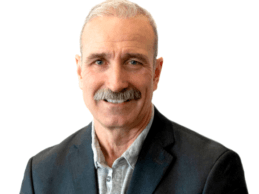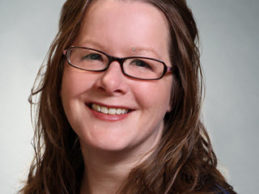If you’ve been to a big-brand grocery or department store recently, you probably noticed some form of healthcare outlet – or maybe you didn’t. These in-store pharmacies and clinics have become so omnipresent, right there next to the diapers, dog food, and green beans, that unless you use them, you may not notice them at all.
This convergence of healthcare and retail has been happening for a few years and represents one of the fastest-growing corners of the healthcare market. In fact, retail
Read More
Health IT & Digital Health-Opinion | Op-Eds | Guest Columns | Analysis, Insights - HIT Consultant
Top 5 RCM Challenges for Healthcare Executives in the COVID-19 Era and Beyond
There have been many memorable “where were you?” events since the 21st century began. But few can match the COVID-19 pandemic, at least from a healthcare perspective.
The effect on healthcare (and healthcare executives) has been particularly profound since our industry is in the center of everything. From the search for personal protective equipment (PPE) to setting up secure wings and field hospitals to instantly redeploying nurses from other floors to the emergency department (ED),
Read More
Improving the Patient Experience by Optimizing Telehealth Through COVID-19 and Beyond
We are facing a global healthcare crisis unlike any in our recent history. Within the span of a few short weeks, we saw our lives and practices drastically change. COVID-19 has fundamentally altered how medical care is delivered today and possibly for many years to come. We as clinicians need to rise to the challenge to provide the best possible care in this time of change and uncertainty. This includes adjusting the way we communicate with patients, adapting to the evolving landscape of
Read More
COVID-19 Underscores Why Certain Aspects of the American Healthcare System Should Change Forever
In the late 1940s, the United Kingdom was busily reassembling country and what remained of the empire in the aftermath of World War II. Among many revelations, the war had convinced Britain’s leaders of the need to provide healthcare for all in the event of calamity upending the basic functions of a civilized society. With that, the UK’s National Health Service (NHS) was born.
In 2020, all perspectives about quality and the time it takes to see a provider aside, the NHS remains quite popular
Read More
Why Now Is The Time to Reimagine Healthcare Through Technology
It wasn’t that long ago that people went to the bank on a Friday to cash their paper paychecks. Maybe they’d put some in checking and take some out in cash. They’d go to the grocery store over the weekend and maybe write one of those checks. Everyone always had to have a pen with them.
It wasn’t that long ago that people would call the ticket agent and discuss flight options for vacation. They’d send a paper ticket in the mail. When it was time to go, people would carry that ticket with them
Read More
Patient Payment Strategies to Accelerate Cash Flow Amid COVID-19
In the past few months, the COVID-19 pandemic has shaken societies, economies, and human wellbeing to the core. While protecting public health and welfare are top priorities for hospitals, the harsh reality is that it takes cash to keep the doors open and serve patients effectively. Revenue is down significantly as a result of canceled elective surgeries, while the costs of medical supplies and in-demand personal protective equipment for workers have skyrocketed. Hospitals’ operating challenges
Read More
How Times of Crisis Spur Needed Change in Healthcare Delivery
As the COVID-19 pandemic continues to change healthcare operations in the world, foundational systems are being adapted to meet these new demands. Sometimes it takes extreme circumstances to see the cracks in a system. COVID-19 has exposed areas with more room for improvement in the healthcare system, such as optimizing operational efficiency. Organizations and individuals have changed their interactions, processes, ways of working, treatment plans, and even foundational technology. As the
Read More
Super-Spreading of COVID-19 Co-Infections Reveals a Deadly Diagnostics Gap
Secondary bacterial or fungal co-infections in COVID-19 patients have received inadequate attention from the public. For most, co-infections pose little to no risk according to reports that an estimated 8% of patients are found to experience this during hospital admission – a relatively low number compared to the global impact of the virus. However, once a patient enters a hospital for care or becomes ventilated while in the ICU, the risk for acquiring and spreading a deadly
Read More
The Adoption of Telehealth During the Pandemic will Shape Healthcare’s New Normal
COVID-19 has presented healthcare with a challenge like no other, with nearly nine million cases all over the world and over 470,000 lives lost. The speed of the outbreak and the disruption caused by it has created unforeseen challenges for communities and economies, and it’s especially apparent in healthcare delivery. Healthcare systems in nations around the globe have dedicated substantial resources to respond to the pandemic and the growth has only somewhat stymied.
While the U.S.
Read More
5 Critical Considerations for Patient Privacy in Telehealth
The COVID-19 pandemic has had a tremendous ripple effect across all industries, with one of the most impacted being healthcare. Providers have had to quickly adapt to supporting patients ‘virtually’ in a secure manner, while simultaneously developing procedures to support accurate reporting to government organizations. These changes have placed added pressure on security and privacy professionals, as they struggle to keep up with urgent demand.
Mature healthcare organizations already have
Read More










